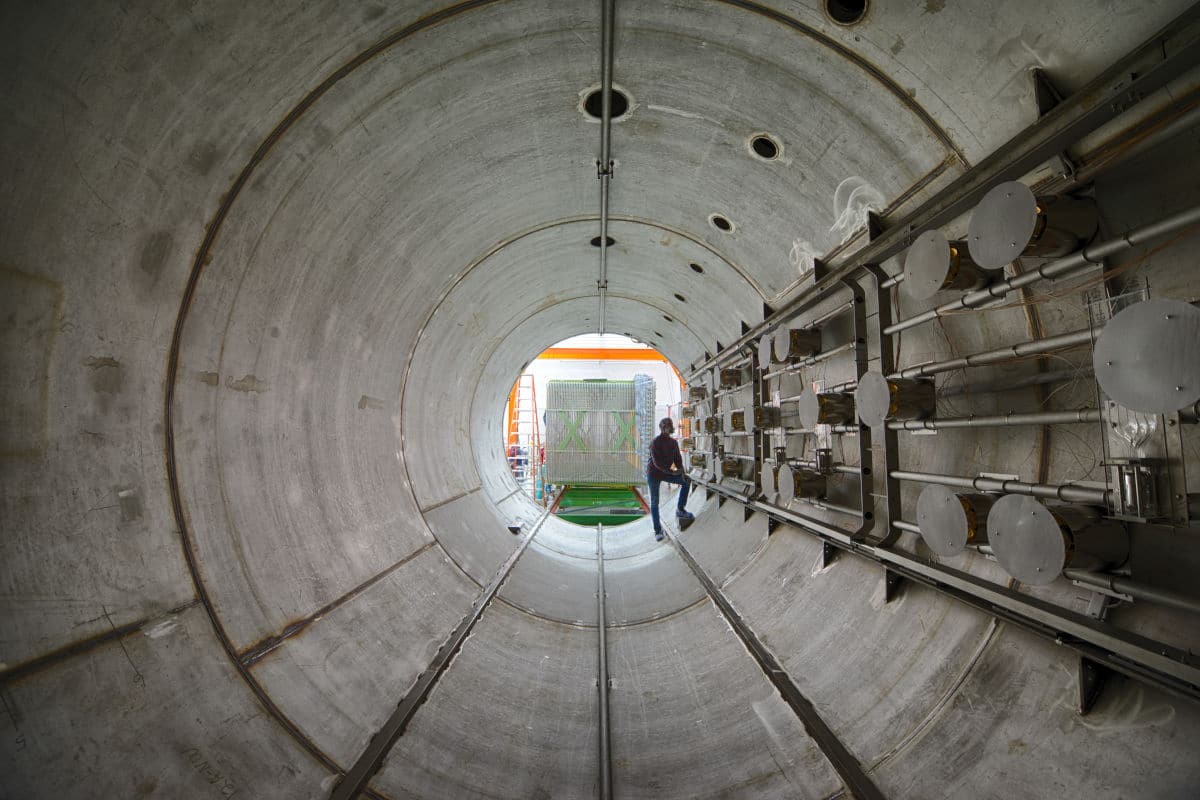
One American experiment thinks it has measured a surplus of certain neutrinos, the other sees nothing strange. Where does that come from?
Neutrinos are just crazy particles. Every second trillions fly through your body, but you don’t notice it. As a rule, neutrinos are virtually unaffected by other particles.
Another strange property is that there are different ‘flavors’ of neutrinos that can change into each other. We believe that we can calculate exactly when such changes take place and to what extent.
Previous measurements of the MiniBooNE . experiment did not match those calculations† And that could indicate new particles. On so-called sterile neutrinos, for example, which are even less attracted to other particles than normal neutrinos.
Now another experiment has, MicroBooNEfocused on the same phenomenon. That just saw nothing crazy, the team reports in a recently published article. So problem solved? Well no. It is still not clear why MiniBooNE did measure something – and there may still be new particles in play.
Distance too small
As far as we know, neutrinos come in three flavors: there are electron neutrinos, muon neutrinos, and tau neutrinos. At the American Fermilab, near Chicago, muon neutrinos are produced by hitting protons on a target. These neutrinos then travel to the detector MiniBooNE, a few hundred meters away.
The MiniBooNE detector consists of a spherical tank of liquid. If a neutrino collides with an atomic nucleus in that liquid, a muon can be formed. And such a muon produces a measurable signal, in the form of a light flash.
Only: MiniBooNE also measured signals that seemed to indicate electron neutrinos from the neutrino beam aimed at the detector. And that was strange. Because while neutrinos can change identities, that shouldn’t have happened to the muon neutrinos traveling from the target to MiniBooNE. The intervening distance was simply too small for that.
Four flavors?
Unless there’s another particle involved. A fourth neutrino, for example, which would then be ‘sterile’: such a particle only interacts with other particles through gravity. And since gravity does not play a significant role in the particle world, in practice this means that the sterile neutrino does not interact with other particles.
Yet this extremely elusive particle may betray its existence. If there are not three, but four neutrino flavors, that changes the rules that describe when neutrinos undergo a metamorphosis. Then it is, for example, possible that a muon neutrino changes into an electron neutrino during the short trip from target to detector.
no surplus
So if the MiniBooNE result is correct, it could really shake up our understanding of physics. But then other experiments should also see the unexpected change from muon to electron neutrino. Such as the MicroBooNE experiment. That looks at the same neutrino beam as MiniBooNE, from about the same location – but with a different technique. Here, the particles that are created after a neutrino collision do not lead to flashes of light, but to detectable traces through the detector. In this way, does MicroBooNE also see electron neutrinos that would not be measured there?
No, the MicroBooNE team announced in an article we wrote about before, but which has only now been officially published: their detector sees exactly as many electron neutrinos as you would expect – or even slightly less. The team did not act overnight. It searched for electron neutrinos in three different ways. But none of those methods revealed a neutrino surplus.
“The results of the MicroBooNE measurement are compatible with the standard scenario where there are only three flavors of neutrinos,” he says. Krijn de Vries, astroparticle physicist at the Vrije Universiteit Brussel, not involved in Mini- or MicroBooNE. “There is therefore no need here for an interpretation in which a fourth, sterile neutrino plays a role.”
Still unclear
At the same time, such a sterile neutrino may still exist, physicist Carlos Argüelles of Harvard University and colleagues argue in a other article, published in the same journal issue as the MicroBooNE results† Scenarios can be envisaged in which such a particle would lead to a surplus of electron neutrinos with MiniBooNE, but not with MicroBooNE. “However, the sterile neutrino scenario has become less likely,” says De Vries.
Interestingly, the MicroBooNE study identified processes that could have wrongly given MiniBooNE the impression that there was an excess of electron neutrinos. But that doesn’t seem to have happened, says De Vries. “No indications were found that these processes were not properly included in the MiniBooNE analysis.”
In other words: it is still unclear how it is possible that MiniBooNE saw an excess of electron neutrino signals. “The answer to that open question could yield very interesting physics,” says De Vries. “Possibly in the form of a sterile neutrino, or in the form of a better understanding of these types of detectors. This definitely needs to be further investigated.”
Source material:
†Search for an Excess of Electron Neutrino Interactions in MicroBooNE Using Multiple Final-State Topologies” – Physical Review Letters
†MicroBooNE and the e Interpretation of the MiniBooNE Low-Energy Excess” – Physical Review Letters
†Neutrino Mystery Endures” – APS Physics
†The Plot Thickens for a Fourth Neutrino” – APS Physics
Krijn de Vries, professor of astroparticle physics, Vrije Universiteit Brussel
Image at the top of this article: Reidar Hahn/Fermilab